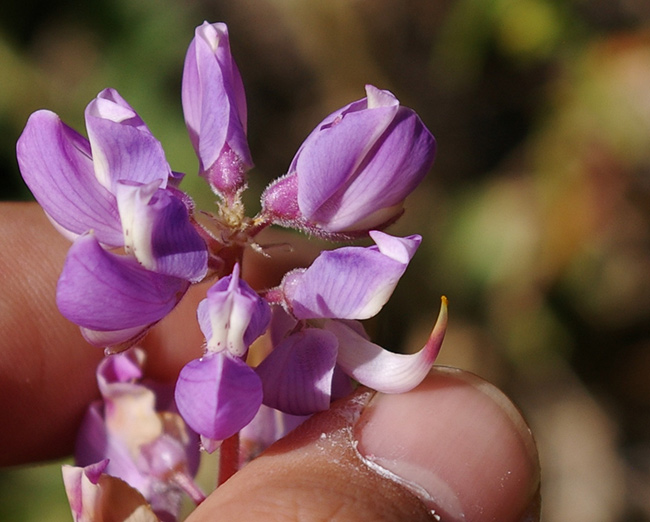Those of you who speak Latin are probably wondering what it is about this flower to inspire the name "wolf." Those of you who don't speak Latin are now wondering if lupine is Latin for wolf. It is. Or more precisely, lupinus means "of or belonging to a wolf." I've read several explanations regarding the origin of the name. The one I like best was shared with me by a fellow ranger last summer. He gently pulled back the blue petals to reveal an inner portion that looks much like the claw of a wolf. It looks pretty cool and makes good sense. The best time to see this is early in the plant's cycle. As it matures, the "claw" opens up to reveal the flower's stamen.
Next time you're out hiking, impress your friends with this piece of trail trivia. If you are careful, it is possible to see the claw with minimal molestation and damage to the plant. While lupine is common in the park, I would be very sad if our flowers were plucked as a result of this post. (Damaging wildflowers carries a $150 fine and/or a court appearance.) Observing the Leave No Trace ethic allows our natural gifts to benefit everyone. In this way the clever wolf has segued us into a conversation about stewardship and the intersection of enjoyment and preservation. And what better topic to discuss on a warm summer day in a patch of lupine?

